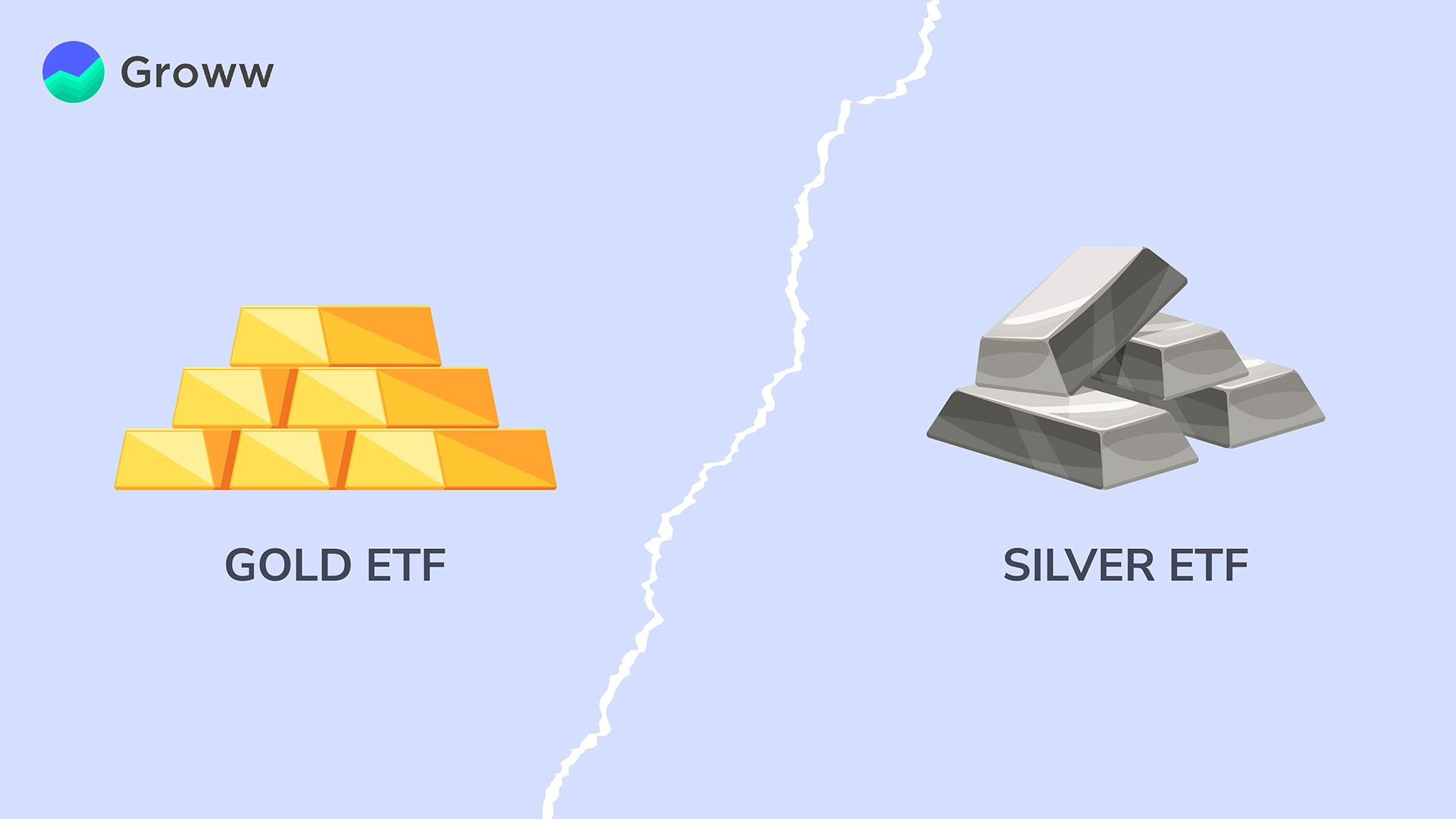Gold ETF vs Silver ETF: Where to Invest?

India, one of the fastest-growing economies in the world, is turning out to be a major market for Exchange-Traded Funds (ETFs). With a strong economy and rich natural resources, ETFs have gained popularity as an investment avenue, allowing individuals to participate in market trends without needing deep financial expertise.
Gold ETF in India
A Gold ETF is a fund that invests in gold and is traded on stock exchanges like NSE and BSE. Unlike physical gold, Gold ETFs offer better liquidity, ease of trading, and transparency in pricing, as they track the spot price of gold.
Key Benefits of Gold ETFs:
- Provides exposure to gold without the hassle of storage.
- Traded on exchanges, ensuring liquidity.
- Helps hedge against inflation and currency fluctuations.
You may also want to know How to Invest in Gold ETF in India
Silver ETF in India
Silver has long been used for jewelry and industrial purposes, particularly electronics and aerospace. Investors looking to diversify their portfolios with silver can opt for Silver ETFs, which track silver prices and provide exposure to this precious metal without physical ownership.
Why Invest in Silver ETFs?
- Silver has strong industrial demand, making it a promising long-term investment.
- Silver ETFs offer a lower entry price than Gold ETFs, making them accessible for investors with a limited budget.
- Provides diversification benefits along with gold investments.
Also read, Silver ETFs - How Does it Work, Features & Taxation
Gold and Silver Funds: Pros and Cons
Gold ETFs have higher liquidity than their silver counterparts, so they'll trade more often enabling you to make better trades on the stock market. They also tend to have lower fees because they only hold actual physical assets like gold bars or coins—no paper contracts are involved!
Silver ETFs charge expenses on top of management fees similar to other funds that track other commodities, such as oil or wheat futures contracts; however, they generally have lower expenses than their gold counterparts because they don't hold any physical assets.
Gold ETFs and Silver ETFs are both safe investments. They’re great for investors who want to diversify their portfolios and hedge against inflation. Here’s a comparison of the two investments:
Gold and Silver ETFs: Similarities
Both gold and silver are precious metals that have been used as currency and investments for years. The only difference between gold and silver is that one is a precious metal, while the other is an industrial metal.
Gold vs Silver ETFs: Key Differences
Here are some key differences with respect to gold vs silver ETFs -
|
Criteria |
Gold ETF |
Silver ETF |
|
Benefits |
Gold ETFs offer a hedge against inflation and economic instability. They have historically delivered stable long-term returns. |
Silver ETFs are more affordable and provide diversification. Silver's industrial demand can drive price appreciation. |
|
Price |
More expensive due to scarcity and demand. |
Cheaper compared to gold, making it accessible to more investors. |
|
Volatility |
Less volatile in the short term but can be influenced by global economic factors. |
More volatile due to industrial demand fluctuations. |
|
Liquidity |
Highly liquid and widely traded. |
Less liquid compared to gold but still actively traded. |
|
Returns |
Historically higher over the long term. |
Returns are influenced by both investment demand and industrial usage, leading to more variability. |
Gold ETF vs Silver ETF: Where Should You Invest?
Investing in silver and gold is an excellent way to diversify your portfolio, but it's essential to know the difference between gold ETFs and silver ETFs.
Gold ETFs are great for investors who want to own physical gold. They're also perfect for those who want to get exposure to the price of gold without owning any.
Silver ETFs can also be used similarly—you can simply buy shares of an exchange-traded fund (ETF) that tracks the price of silver. However, silver ETFs don't contain any physical silver assets, unlike gold ETFs.
Conclusion
So, this was a brief overview of the key differences between gold and silver ETFs. Depending on the investment and risk appetite, you can decide which ETF would fit your portfolio the most.
Both investment options have their fair share of pros and cons. All you need is to time your investments ideally.
Happy Investing!
Disclaimer: This blog is solely for educational purposes. The securities/investments quoted here are not recommendatory.
To read the RA disclaimer, please click here